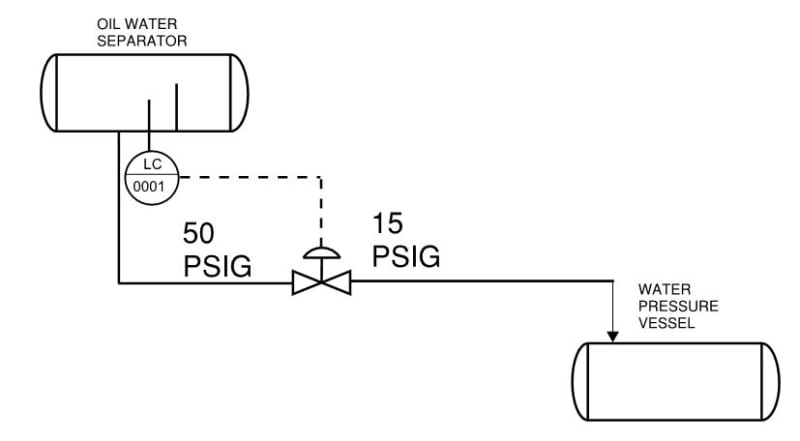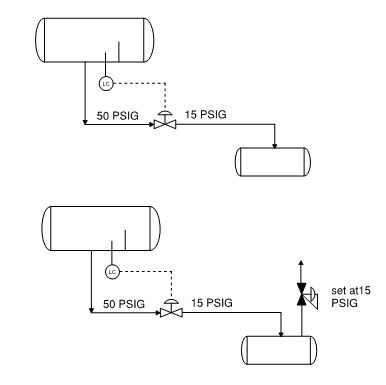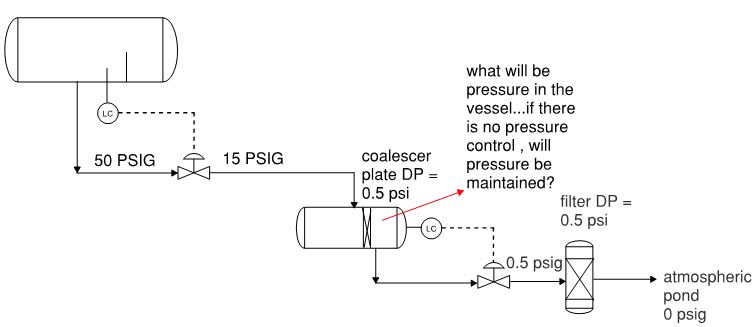zamakaze
Chemical
- Sep 3, 2020
- 46
I have a oil water separator operating at 50 psig with a level control for interface. Water flows out of the level control valve to a pressure vessel. The level control valve is sized for p inlet = 50 psig and p outlet = 15 psig. The water pressure vessel has no blanketing or any positive pressure.
What will be the pressure inside the water pressure vessel. Will it be due to vapor pressure of water? Or will it be 15 psig? How to determine operating pressure of the water pressure vessel?

What will be the pressure inside the water pressure vessel. Will it be due to vapor pressure of water? Or will it be 15 psig? How to determine operating pressure of the water pressure vessel?



